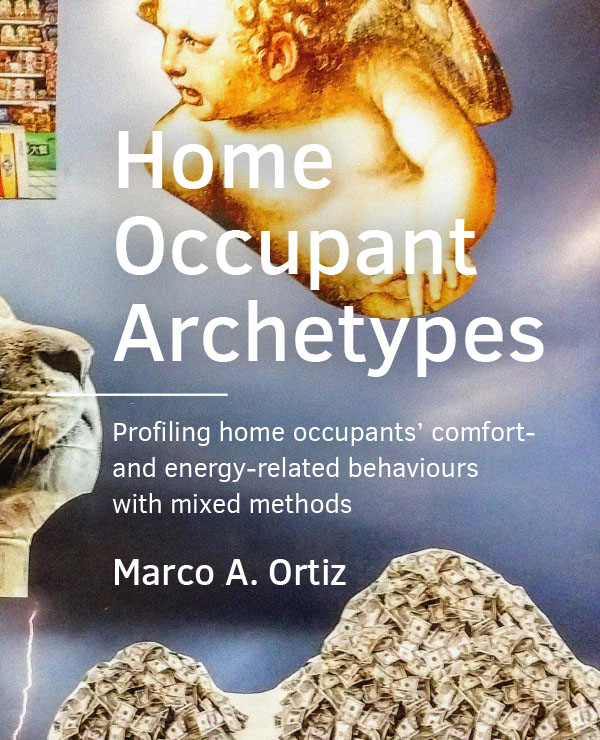Conclusion and recommendations
DOI:
https://doi.org/10.7480/abe.2019.13.4160Abstract
This research provided insights into the comfort and energy-consuming behaviours of home occupants and into grouping these home occupants based on their individual differences. This was achieved by using a human-centered approach to an engineering challenge, by assuming comfort as a holistic experience of the home environment, and by treating the ‘occupant-environment’ interactions as a dynamic system.
Such an approach drew methods typically used in design and ethnographic research, by gathering both qualitative and quantitative data from both the occupant and the building. The occupant data was collected quantitatively with the use of a questionnaire (self-reported) and qualitatively with interviews (procedural knowledge) and finally with generative techniques (interpretive knowledge). In such a way, different types of occupant knowledge were elicited and collected. The building data was gathered with checklists, monitoring, and energy readings.
With the questionnaire data and a clustering technique -the TwoStep cluster analysis- five distinct types of occupant, or archetypes, were discovered and they were progressively enhanced and substantiated with the interview and generative techniques data. Additionally, data of building characteristics, indoor environmental factors, and actual energy consumption completed the details of the archetypes.
The following paragraphs provide the conclusion and recommendations drawn from this research. First each of the key questions are answered followed by the answer to the main research question; in which the final description of the archetypes is presented. This is followed by the strengths and limitations of this work and recommendations for the future process. Then for each archetype, environmental design parameters are presented. This finishes with recommendations for future research and the implications of this work.
References
Bluyssen, P. M. (2019). Towards an integrated analysis of the indoor environmental factors and its effects on occupants. Intelligent Buildings International. https://doi.org/10.1080/17508975.2019.1599318
Brown, T. (2009). Change by design: How design thinking transforms organizations and inspires organization. New York: Harper Collins.
Guest, G., Bunce, A., & Johnson, L. (2006). How many interviews are enough? An experiment with data saturation and variability. Field methods, 18(1), 59-82.
IDEO.org. (2015). The field guide to human-centered design. San Francisco: IDEO.org.
Ivankova, N. V., Creswell, J. W., & Stick, S. L. (2006). Using mixed-methods sequential explanatory design: From theory to practice. Field methods, 18(1), 3-20.
Keyson, D. V., & Herrera, N. R. (2017). Making energy feedback understandable. In Living Labs (pp. 291-295). Springer, Cham.
Leech, N. L., & Onwuegbuzie, A. J. (2008). Qualitative data analysis: A compendium of techniques and a framework for selection for school psychology research and beyond. School Psychology Quarterly, 23(4), 587.
Mason, M. (2010). Sample size and saturation in PhD studies using qualitative interviews. In Forum qualitative Sozialforschung/Forum: qualitative social research (Vol. 11, No. 3).
Sanders, E., & William, C. (2002). Harnessing people’s creativity: Ideation and expression through visual communication. Focus Groups (pp. 147-158). CRC Press.


